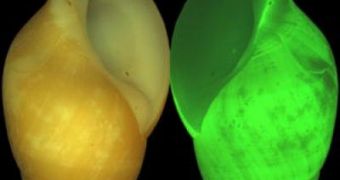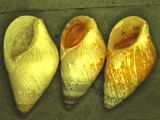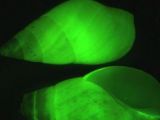Two scientists at Scripps Institution of Oceanography at UC San Diego, have discovered the secret of a strange sea snail, which uses flashes of bioluminescent light as a defense mechanism.
A species of 'clusterwink snail' called Hinea brasiliana, was studied by Dimitri Deheyn and Nerida Wilson of Scripps Oceanography (Wilson is now working at the Australian Museum in Sydney).
They carried out several experiments in Scripps' Experimental Aquarium facility, and found out the way that H. brasiliana starts to glow, and that it does so when it senses a possible threat from another marine animal, like a crab or a shrimp swimming by.
The way that the snail spreads light is extremely interesting and it was a big surprise for the researchers, since this particular species of clusterwink has opaque, yellowish shells, that were believed to prevent light transmission.
The two scientists discovered that the snail actually produces the green bioluminescence from its body, and the role of the shell is to disperse only that specific color of light.
The researchers knew that these snails produced some kind of light, but they believed that the light was a focused beam, instead of being spread in every direction.
So they speculated that this is a way of scaring potential predators, by tricking them into thinking that they were about to attack a larger animal.
To figure out the bioluminescence, Wilson collected the snails used in the study in Australia and developed the work with Deheyn, who is part of Scripps' Marine Biology Research Division.
He said that “it's rare for any bottom-dwelling snails to produce bioluminescence.
“So its even more amazing that this snail has a shell that maximizes the signal so efficiently.”
Deheyn explained that this type of mechanism was very interesting for optics and bioengineering research, and development industries.
“The light diffusion capacity we see with this snail is much greater than comparative reference material,” he said.
“Our next focus is to understand what makes the shell have this capacity and that could be important for building materials with better optical performance.”
The two researcher describe their findings online in Proceedings of the Royal Society B (Biological Sciences).

 14 DAY TRIAL //
14 DAY TRIAL // 

